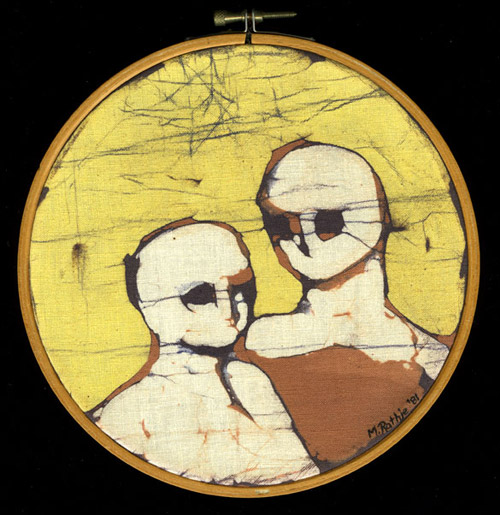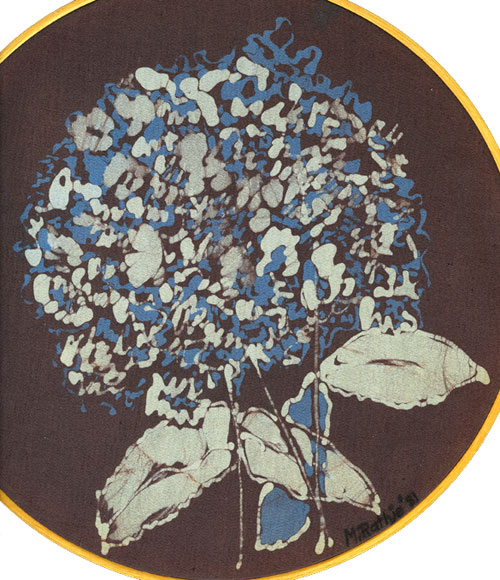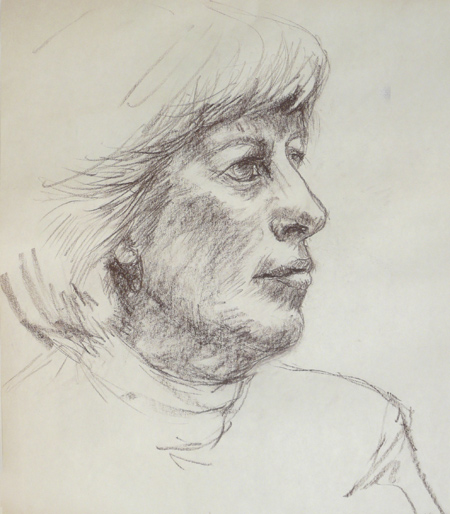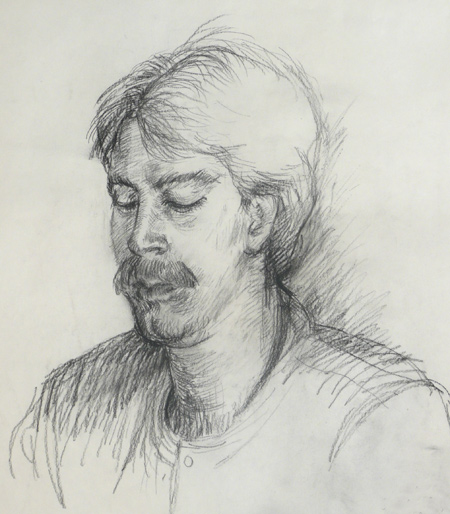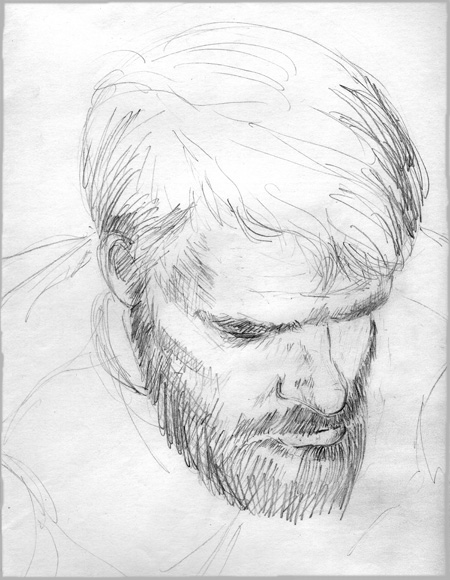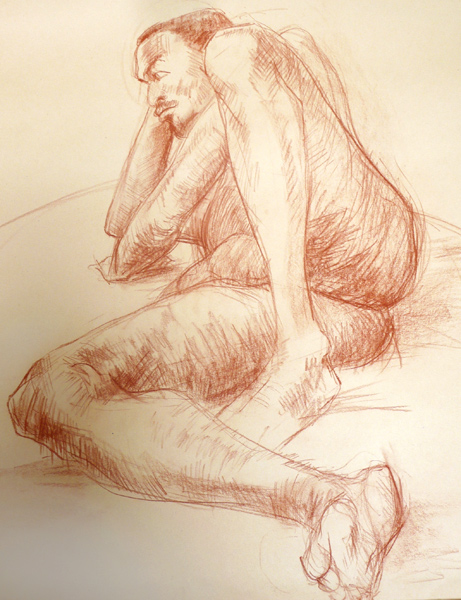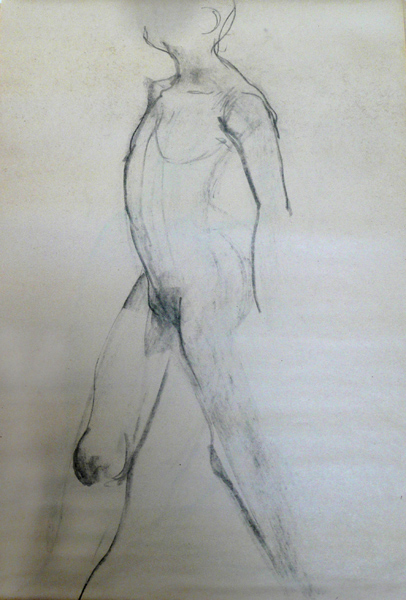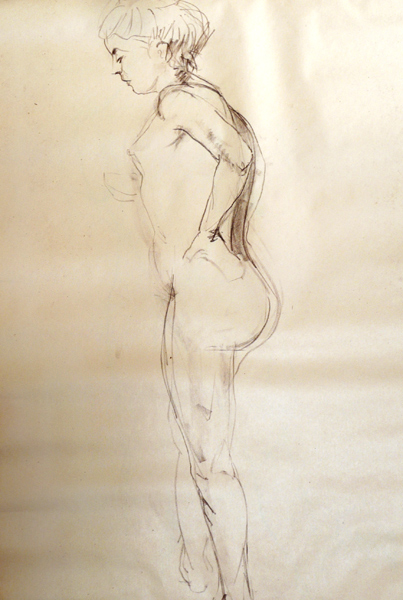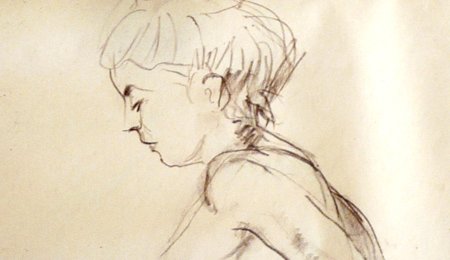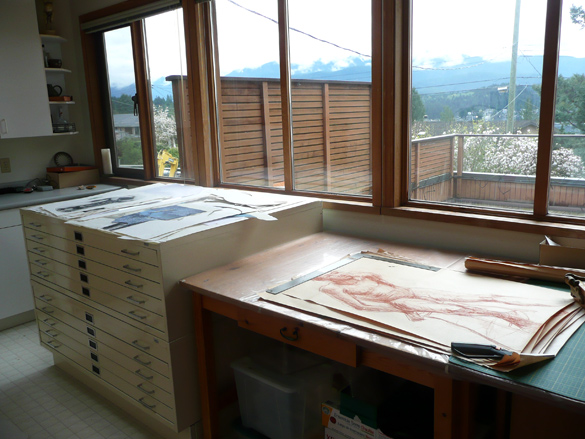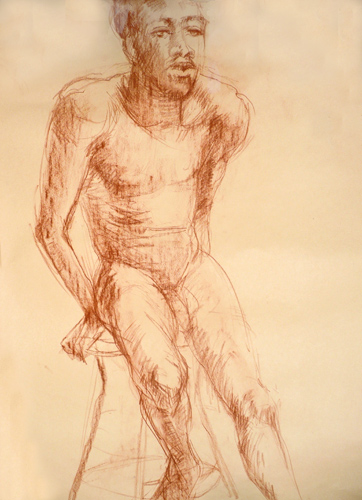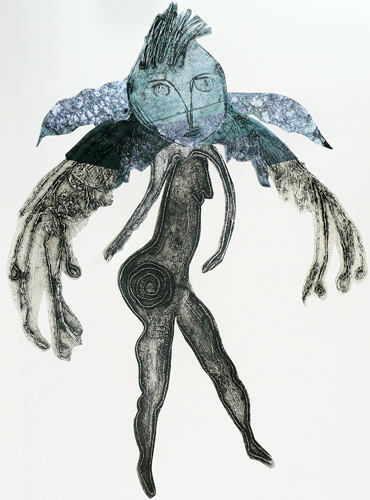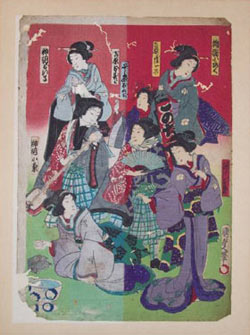another batik
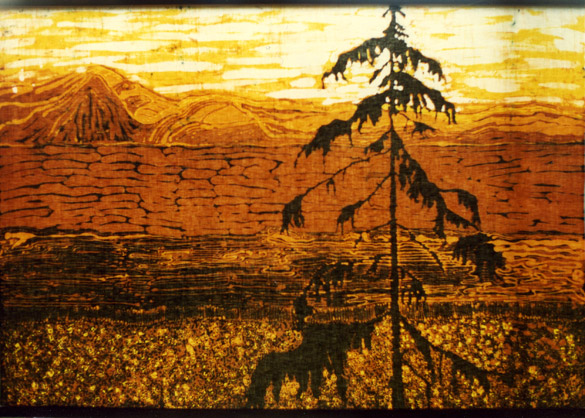
STRATA – batik on cotton, 100 x 147 cm. (39″ x 58″), 1981
In the previous post about batiks and in the conversation with commenters, I recalled a commissioned batik hanging I’d done. Marly’s question about it inspired me to hunt and luckily find the only photo I think I have of it. It is not a good photograph, lacking sharpness and taken hanging in front of a window to utilize some bright backlighting, and thus revealing a shadow from the window frame running down on the right of the tree. Askew too, but straightened thanks to photo-editing software. Fortunately I’d written a wee bit of information (size, date) on the back of the photo… which leads to my next observation.
All this digging out and revisiting of older works this past few weeks has reminded me about how negligent I used to be in my early years regarding documentation of my work with high quality photographs and slides along with written material about the techniques and materials used, sizes, dates, and even ownership if sold. I think I was not taking myself and my work seriously enough. As a serious artist, even as a craftsperson which I felt to be with batiking, I should have been professional enough to keep proper records.
Later, when I joined the Art Institute program at Capilano University, I learned all about this and have been quite meticulous with my record-keeping. In fact, those records are extremely handy when I need to look up information about a piece of work without having to pull it out of storage…. to measure it, for instance. The biggest challenge for me was achieving good slides, then the expense in having duplicates made for submissions to juries. Nowadays I’m very grateful for much improved digital photography and computer technology and that digital files are accepted everywhere (that took a while, too).
